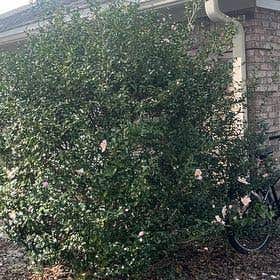Lagunaria
Also known as
Lagunaria, pyramid tree, Norfolk Island hibiscus, Queensland white oak, sally wood, white oak, itchy bomb tree, cow itch tree and Lagunaria patersonii
Taxonomy

Lagunaria patersonia
Lagunaria
Malvaceae
Malvales

How to care for Lagunaria
How often to water your Lagunaria

every 9
Lagunaria needs 0.5 cups of water every 9 when it doesn’t get direct sunlight and is potted in a 5" pot.
Use our water calculator to personalize watering recommendations to your environment or download Greg for more advanced recommendations for all of your plants.

Water 0.5 cups every
9
Finding light for Lagunaria in your home

a window
Lagunaria love being close to bright, sunny windows 😎.
Place it less than 1ft from a south-facing window to maximize the potential for growth.
Lagunaria does not tolerate low-light 🚫.
Select your region to see how the current weather in your area affects the placement of Lagunaria in your home 🏡.
How to fertilize Lagunaria

Most potting soils come with ample nutrients which plants use to produce new growth.
By the time your plant has depleted the nutrients in its soil it’s likely grown enough to need a larger pot anyway.
To replenish this plant's nutrients, repot your Lagunaria after it doubles in size or once a year—whichever comes first.
Care Summary for Lagunaria

Lagunaria
 Greg recommends:
Greg recommends:
 Water
Water
0.5 cups every 9 days
 Placement
Placement
< 1ft from a window
 Nutrients
Nutrients
Repot after 2x growth
Based on the 4” pot your plant is in, and that it doesn’t get direct sunlight.

 Trending in your area
Trending in your area
 Similar to Lagunaria
Similar to Lagunaria
✨ Discover rare plants

Chinese Evergreen 'Ga…

Cigar Plant

Marquise de Sevigne

Anthurium Fingers

Ruby Ball

Picasso's Paintbrush

Sarcochilus fitzgeral…

Cereus peruvianus 'Pa…

Philodendron eximium

Anthurium papillilami…

Electric Blue Gecko

Betel

Black Monkey Thorn Tr…

Crassula 'Purple Drag…

Peperomia 'Harmony's …

Astroloba congesta







































